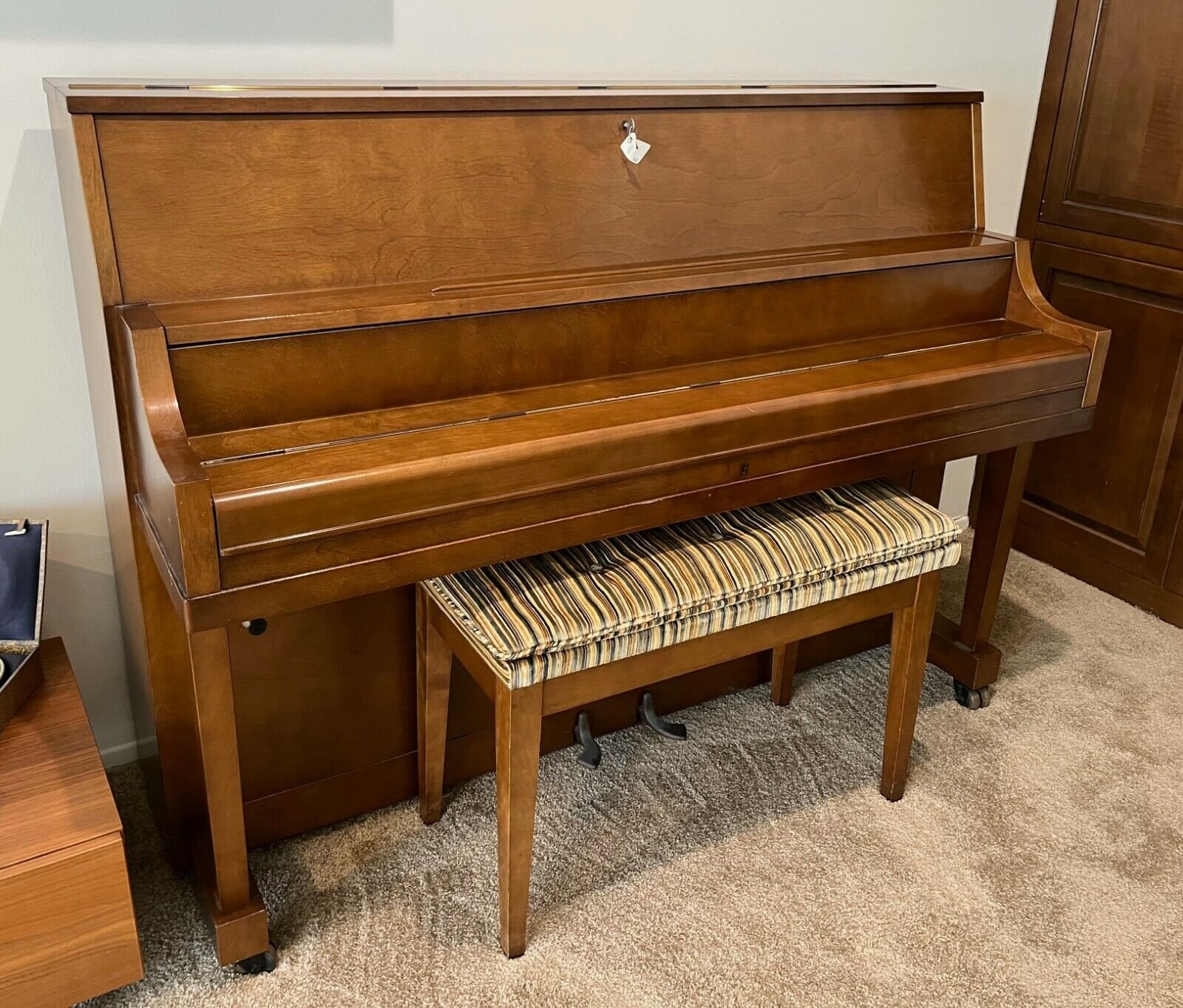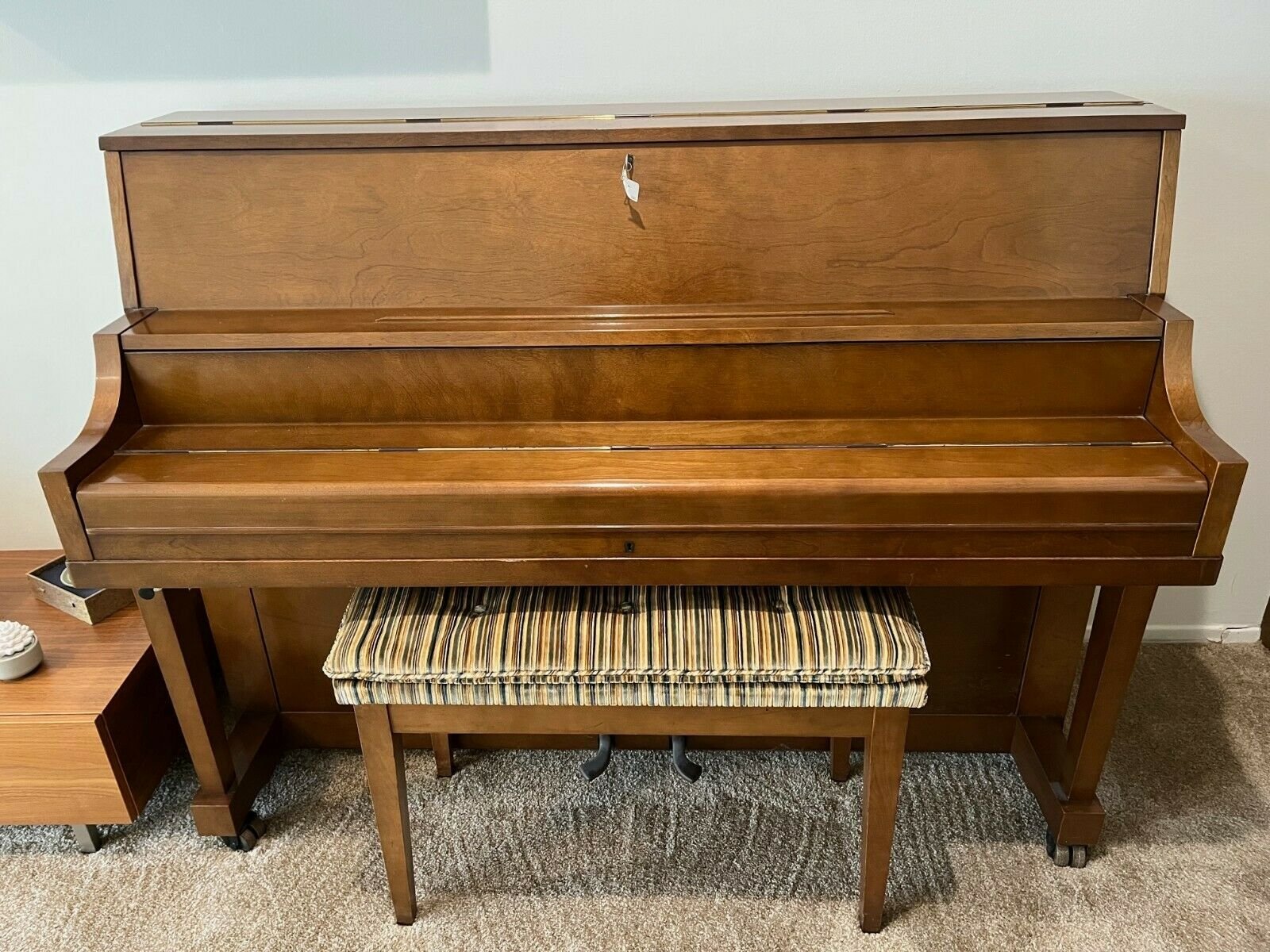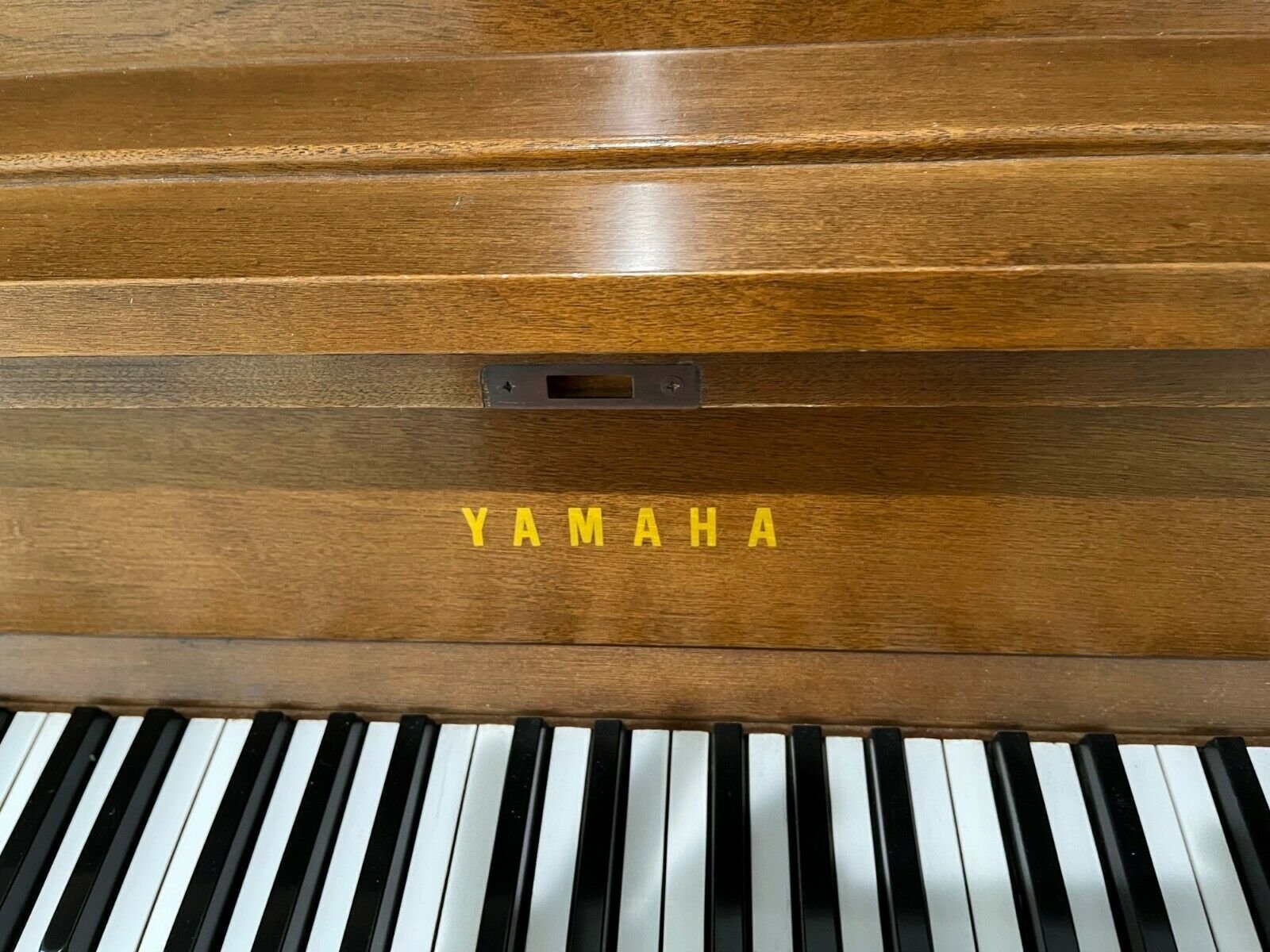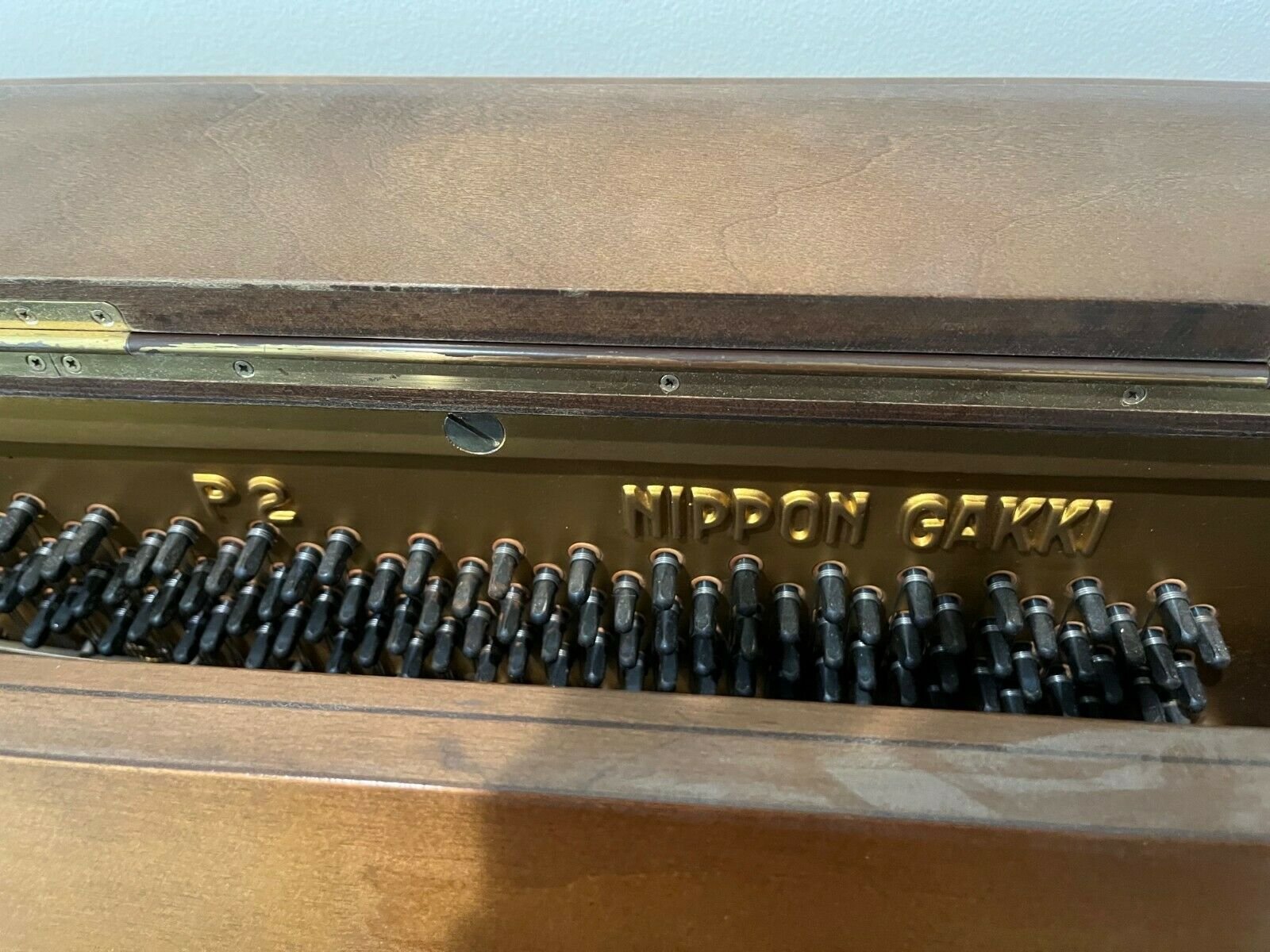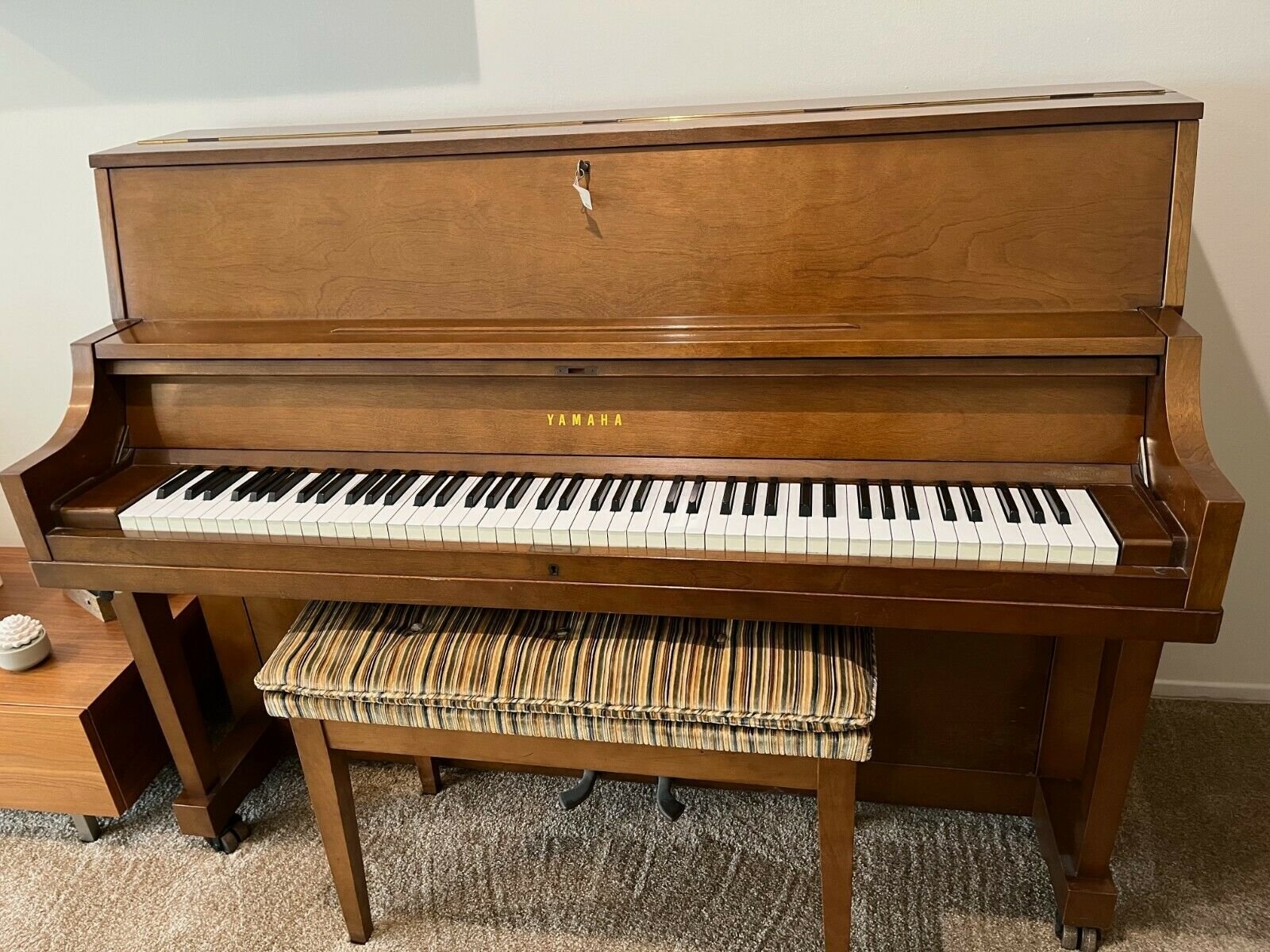
One of the most important Bob Dylan finds of the last century; Dylans personally owned and used Yamaha upright piano. Owned by Dylan from September 1969 to circa 1975. In this time period Dylan wrote 5 albums including one of his most revered, Blood on the tracks which includes one of his most important songs 'Tangled up in blue”.
The provenance which accompanies this historic piece includes an official Yamaha bond made out to Dylan, which includes the serial number of the piano, the original invoice made out to Dylan with his home address on it, 94 McDougal St. New York, along with some correspondents between the piano shop and Dylans assistant.
Also, two journalists have published articles related to Dylans upright piano;
Author and journalist Lucian Truscott witnessed Dylan composing songs on his upright piano and wrote this fascinating piece;
“I was living in a $200-a-month loft on the fourth floor of 124 West Houston, on the edge of Soho, then still an industrial wasteland. Dylan had a practice space on the first floor, right around the corner from his MacDougal Street residence. When I’d rented my loft three years before and the landlord informed me that Dylan was on the first floor, it was unremarkable. Of course when I rented a loft on Houston Street, Dylan would be downstairs, of course he would.
When you walked in from the street you could hear him sometimes, composing music and trying out lyrics. There was only a thin Sheetrock wall between Dylan’s studio and the lobby, and Dylan had an upright piano right against that wall. I knew this because I had given him a hand moving amps and other equipment in and out of the studio. One day, on my way to work at the Village Voice, I found a folding chair on the street and stashed it under the stairs so I could pull it out and sit there, inches away from Dylan, and listen to him writing at the piano.
That’s how I first heard him writing the songs that would become Blood on the Tracks. “Tangled Up in Blue,” “You’re Going to Make Me Lonesome When You Go,” “If You See Her, Say Hello.” Our auteur of adolescent angst was trying to put his life back together at the piano.
Dylan had always had a way of distilling being young and living in New York City. His songs had always piled up images, metaphors, hints about his life in which we could read who we were. But this was something entirely different. This was Dylan without the cloak of lyrical mystery. This was Dylan unfettered, the man he saw looking in the mirror, bleeding anger and regret, love and loss, and pain. Lots and lots of pain as he broke up with his wife, Sarah.
One afternoon I came downstairs and heard him writing his midlife masterpiece, “Idiot Wind.” He had that melody down, with its mix of wistfulness and acid resentment, and knocked out the refrain quickly, his anger bubbling up in raw bile. “Idiot wind, blowing every time you move your teeth.” Vicious stuff. I sat and listened as he struggled with the reckoning, that there wasn’t just one idiot to blame.
Idiot wind
Blowing through the buttons of our coats
Blowing through the letters that we wrote
(Bang bang on the keyboard…another pass…bang bang…what next?)
Blowing through the dust upon our shelves
Then the banging stopped, and — so quietly I could barely hear him through the thin wall — he caressed the keys of that upright piano as he wrote the final lines of the song:
We’re idiots, babe
It’s a wonder we can even feed ourselves.” (The Village Voice, Nov. 2016)
Fellow journalist David Davidson wrote of his friend Paul who helped Dylan move pieces from his home at 94 MacDougal St. to his personal recording studio around the corner at 124 West Houston St. NY;
“Fifty years ago on a late fall day, my friend Paul pulled up in front of that building, driving an old step-van truck with the words “Ashes & Sand” painted on the side. Standing there waiting for him was Bob Dylan, in a wispy beard, wearing blue jeans, an old shearling jacket and a fur hat with ear flaps. He just blended in with Villagers passing by.
Paul had just driven down from Woodstock with his friend Walter, who was employed as Dylan’s caretaker. The step van was loaded with furniture and boxes. The plan for the day was to pick up the future Nobel laureate and help him move some stuff between his house around the corner on 94 McDougal St. and the studio he rented on the ground floor of the building on West Houston St.
“I had seen so many black-and-white photos of Dylan that my first thought was, ‘Oh my God, I’m meeting Bob Dylan and he’s in color!'” Paul recalled.
Paul was determined not to say anything awkward or foolish. The studio, Paul remembers, was full of various instruments, mixing boards, mics and a stand-up piano against one wall. Dylan worked on that piano developing material” (The Village Sun, August, 2020)
Nobel laureate Bob Dylan donated all of his personal archive to the Tulsa University, which makes it very difficult to find pieces on the open market. This is truly an important cultural artefact which helped Dylan compose some of his most important songs.
If you would like to make an offer for this historic piece please click the button below.
